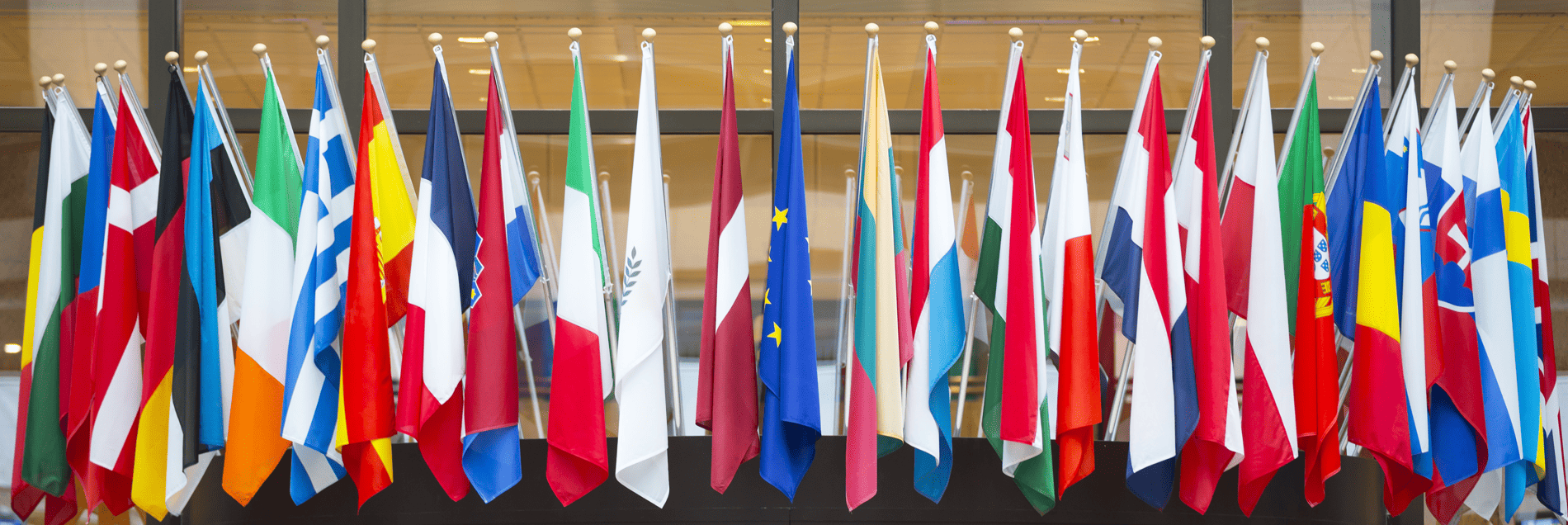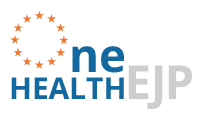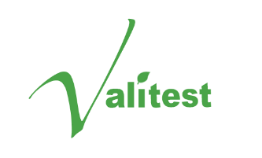
Mener des projets européens pour faire avancer les connaissances
Les travaux conduits à l’Agence visent à développer les connaissances et les méthodologies, échanger avec les partenaires sur des thématiques de travail communes et constituer un réseau d’organismes et d’experts. Ces organismes et experts peuvent par ailleurs contribuer aux travaux divers de l’Agence en évaluation des risques.
L’Anses coordonne des programmes européens d’envergure
PARC
 Le Partenariat européen pour l'évaluation des risques liés aux substances chimiques (PARC – Partnership for the assessment of risks from chemicals), co-financé par le programme-cadre de l'Union européenne pour la recherche et l’innovation « Horizon Europe » (2021-2027), a pour ambition de concevoir une évaluation des risques des substances chimiques de nouvelle génération afin de mieux protéger la santé et l’environnement. Coordonné par l’Anses, PARC représente une mobilisation d’une ampleur inédite, puisqu’il fédère environ 200 acteurs, français et européens. Le partenariat englobe tous les aspects de l’évaluation du risque chimique ; il vise notamment à mieux anticiper les risques émergents, mieux prendre en compte les risques combinés et à soutenir la mise en œuvre effective des nouvelles orientations des politiques publiques européennes de protection de la santé et de l’environnement en réponse à d’importants enjeux sanitaires et écologiques ainsi qu’aux attentes des citoyens.
Le Partenariat européen pour l'évaluation des risques liés aux substances chimiques (PARC – Partnership for the assessment of risks from chemicals), co-financé par le programme-cadre de l'Union européenne pour la recherche et l’innovation « Horizon Europe » (2021-2027), a pour ambition de concevoir une évaluation des risques des substances chimiques de nouvelle génération afin de mieux protéger la santé et l’environnement. Coordonné par l’Anses, PARC représente une mobilisation d’une ampleur inédite, puisqu’il fédère environ 200 acteurs, français et européens. Le partenariat englobe tous les aspects de l’évaluation du risque chimique ; il vise notamment à mieux anticiper les risques émergents, mieux prendre en compte les risques combinés et à soutenir la mise en œuvre effective des nouvelles orientations des politiques publiques européennes de protection de la santé et de l’environnement en réponse à d’importants enjeux sanitaires et écologiques ainsi qu’aux attentes des citoyens.
One Health EJP

Les principaux projets européens dans lesquels l’Anses intervient
Les projets européens, recevant un financement européen et/ou avec des partenaires européens, promeuvent l’expertise de l’Anses et permettent aux scientifiques de l’Agence d’entretenir l’excellence de leur compétences et expertises. Cette activité contribue ainsi à appuyer plus efficacement l’évaluation des risques, ainsi que les activités de référence des laboratoires.
Les équipes de l’Anses participent à de nombreux projets européens, financés principalement par les Programmes-cadres de recherche et d’innovation de l’Union européenne (Horizon 2020, et depuis 2021 par Horizon Europe), mais aussi par d’autres sources de financement telles que l'Autorité européenne de sécurité des aliments (EFSA), les ERA-NETs, les initiatives de programmation conjointe (Joint Programming Initiatives - JPI) ou encore les appels bilatéraux de l’Agence nationale de la recherche (ANR). Les tableaux ci-dessous regroupent les projets les plus récents.
| Acronyme | Nom | Durée |
|---|---|---|
| EUFAWREADY | Enhancing Europe's Readiness for Managing Fall Armyworm, an Invasive Pest Threat | 2025 - 2029 |
| EUPAHW | European partnership on animal health and welfare | 2024 - 2031 |
| TOXBOX | Toxicology-testing platform integrating immunocompetent in vitro/ex vivo modules with real-time sensing and machine learning based in silico models for life cycle assessment and SSbD | 2024 - 2027 |
| PAIR | Pandemic Information to Support Rapid Response | 2024 - 2027 |
| DARWIN | Transition to safe & sustainable food systems through new & innovative detection methods & digital solutions for plant-based products derived from new genomic techniques, under a co-creation approach | 2024 - 2027 |
| WildPosh | Pan European Assessment, Monitoring and Mitigation of Chemicals Stressors on the Health of Wild Pollinators | 2024 - 2027 |
| NEM-EMERGE | An integrated set of novel approaches to counter the emergence and proliferation of invasive and virulent soil-borne nematodes | 2024 - 2027 |
| CATALYSE | Catalysing scientific innovation into food safety action | 2024 - 2026 |
| EUPHRESCOIII | Strenghtening Phytosanitary Research Programming and Collaboration: from European to Global Phytosanitary Research Coordination | 2024 - 2026 |
| IHEN PROJECT | International Human Exposome Network Project | 2023 - 2026 |
| OneBAT | One Health approach to understand, predict and prevent viral emergencies from bats | 2023 - 2026 |
| WiLiMan-ID | Ecology of Wild-life, Livestock, huMan and Infectious Diseases in changing environments | 2023 - 2028 |
| PARC | Partnership for the Assessment of Risks from Chemicals | 2022 - 2029 |
| BROILERNET | Practice and Science Broiler Production Innovation Network | 2022 - 2026 |
| HOLiFOOD | Holistic approach for tackling food systems risks in a changing global environment | 2022 - 2026 |
| SPIDVAC | Improved control of priority animal diseases: Novel vaccines and companion diagnostic tests for African horse sickness, peste des petits ruminants and foot-and-mouth disease | 2022 - 2026 |
| ISIDORe | Integrated Services for Infectious Diseases Outbreak Research | 2022 - 2025 |
| SAFFI | SAFe Foods for Infants in China and the EU | 2020 - 2024 |
| ATHLETE | Advancing Tools for Human Early Lifecourse Exposome Research and Translation | 2020 - 2025 |
| MOOD | MOnitoring Outbreak events for Disease surveillance in a data science context | 2020 - 2024 |
| EVA-GLOBAL | European virus archive goes Global | 2020 - 2024 |
| NETPOULSAFE | Networking European poultry actors for enhancing the compliance of biosecurity measures for a sustainable production | 2020 - 2024 |
| GOLIATH | Beating Goliath: Generation Of NoveL, Integrated and Internationally Harmonised Approaches for Testing Metabolism Disrupting Compounds | 2019 - 2024 |
| OBERON | An integrative strategy of testing systems for identification of EDs related to metabolic disorders | 2019 - 2024 |
| RiskGONE | Risk Governance of Nanotechnology | 2019 - 2023 |
| HERA | Integrating Environment and Health Research: a Vision for the EU | 2019 - 2022 |
| One Health EJP | Promoting One Health in Europe through joint actions on foodborne zoonoses, antimicrobial resistance and emerging microbiological hazards | 2018 - 2023 |
| PoshBee | Pan-european assessment, monitoring, and mitigation Of Stressors on the Health of BEEs | 2018 - 2023 |
| VIVALDI | Veterinary Validation of Point-of-Care Detection Instrument | 2018 - 2022 |
| EuroBioTox | European programme for the establishment of validated procedures for the detection and identification of biological toxins | 2017 - 2023 |
| HBM4EU | European Human Biomonitoring Initiative | 2017 - 2022 |
| VALITEST | Validation of diagnostic tests to support plant health | 2018 - 2021 |
| VetBioNet | Veterinary Biocontained facility Network for excellence in animal infectiology research and experimentation | 2017 - 2022 |
| PALE-Blu | Understanding pathogen, livestock, environment interactions involving bluetongue virus | 2017 - 2021 |
| MET-PEST | Multi-approach determination of metal based pesticides in food | 2017 - 2019 |
| PRO-METROFOOD | Progressing towards the construction of METROFOOD-RI | janv. - déc. 2017 |
| ZIKAlliance | A global alliance for Zika virus control and prevention | 2016 - 2019 |
| EuroMix | EuroMix | 2015 - 2019 |
| POnTE | Pest Organisms Threatening Europe | 2015 - 2019 |
| SUSFANS | Metrics, Models and Foresight for European Sustainable Food and Nutrition Security | 2015 - 2019 |
| COMPARE | COllaborative Management Platform for detection and Analyses of (Re-)emerging and foodborne outbreaks in Europe | 2014 - 2019 |
| Nom | Durée |
|---|---|
| A retail prevalence study to investigate microbiological contamination levels in RTE plant-based dairy and meat substitutes | 2025 - 2027 |
| ADME4NGRA: Implementing the EFSA NAMs Roadmap through Advancing Toxicokinetic Knowledge in Chemical Risk Assessment | 2023 - 2027 |
| Creation of Open Access EU Food Composition Database (EU FCDB) and European Environmental Footprint of Food Database (EFF database) | 2022 - 2025 |
| Cross member state collaboration and development for improved outbreak investigation, preparedness and sharing of Whole Genome Sequences in the EU | 2025 - 2027 |
| Data flow mapping in a Member State | 2024 - 2025 |
| Entrusting new preparatory tasks falling within the mission of the EFSA Pesticides Peer Review and Pesticides Residues and Application Desk units (Framework partnership agreement and its specific requests) | 2021-2025 |
| Establishing capacities for active surveillance of highly pathogenic avian influenza in wild birds in Europe | 2024 - 2027 |
| Eurocigua2: An integrated approach to characterise the human health risks of ciguatoxins in fish in Europe | 2022 - 2025 |
| Evaluation of new evidence on Non-Dietary Exposure to Plant Protection Products | 2023 - 2025 |
| Experimental and observational evidence to reduce knowledge gaps for risk assessment of new and emerging plant pests | 2023 - 2027 |
| Extension of the Risk Assessment Knowledge Integration Platform "RAKIP-Web" | 2024 - 2025 |
| Identification of emerging risks associated with food supplements, other than vitamins and minerals | 2024 - 2026 |
| Initiative Group on Per- and Polyfluoroalkyl substances (PFAS) | 2024 - 2025 |
| Large Language Models analysis for automatic FoodEx2 codification | 2024 - 2027 |
| Monitoring and assessing the potential impact of the introduction of the invasive weed teosinte on maize cultivation in the EU | 2025 - 2028 |
| NAMS4NANO: Integration of New Approach Methodologies results in chemical risk | 2022 - 2026 |
| One Health approach to investigate Botulinum neurotoxin-producing bacteria contamination levels from farm to fork | 2025 - 2027 |
| Partnership with EFSA on the retrospective Cumulative Risk Assessment of dietary exposure to pesticide residues (Framework partnership agreement and its specific requests) | 2024 - 2027 |
| Pathogens in Food Database | 2022 - 2026 |
| Rebuild Data Framework – New Data Ingestion and Management System Member States Recommendations and Enhancing for new functionalities | 2024 - 2025 |
| Request to provide a scientific and technical assistance on a horizon scanning exercise in view to crisis preparedness on plant health for the EU territory | 2022 - 2026 |
| Support to EFSA in the Risk Assessment of Food Enzymes, Food Additives, Food Flavourings and Feed Additives | 2023 - 2027 |
| Technical and Scientific Support for the preparation of the EU One Health Zoonoses report (EUOHZ) | 2025 - 2029 |
| TKplate 2.0: An Open source platform integrating physiologically-based kinetic and physiologically-based kinetic-dynamic models and machine learning models for risk assessment of single and multiple chemicals and biological stressors in animal species | 2022 - 2025 |
| Acronyme | Nom | Durée | Financeur |
|---|---|---|---|
| BEAP-MAR | Blue BioEconomy in the Atlantic Area: New Products from MARine organisms | 2024 - 2027 | INTERREG Atlatic Area |
| JAPreventNCD | Cancer and other NCDs prevention –action on health determinants | 2024 - 2027 | EU4Health |
| AngioEU | Emerging zoonotic nematode Angiostrongylus cantonensis in EU and French overseas territories | 2025 - 2027 | PHC Barrande |
| ENVIRANT | Environmental impact of anthelmintics in livestock and alternatives to minimize their use | 2024 - 2028 | COST |
| EU-WISH | EU Wastewater Integrated Surveillance for Public Health | 2023 - 2026 | EU4Health |
| ESFLU | European Swine Influenza Network | 2022- 2026 | COST |
| Pseudo-Maldi | Improvement of maldi-tof identification of pseudomonas species: towards fast & accurate study of antimicrobial susceptibility | 2024 - 2026 | PHC Amadeus |
| ENVIRE | Interventions to control the dynamics of antimicrobial resistance from chickens through the environment | 2022 - 2025 | JPI AMR |
| ICONIC | Ionophore coccidiostats: risk of CO-selectioN of antImicrobial resistance - Clinical impact and intervention strategies | 2022 - 2025 | JPI AMR |
| EU-JAMRAI 2 | Joint Action Antimicrobial Resistance and Healthcare-Associated Infections 2 | 2024 - 2027 | EU4Health |
| Joint Action on quality of medicines and implementation of the pharmaceutical legislation/strategy | 2022 - 2025 | EU4Health | |
| MEDplants4vet | Medicinal plants for animal health care: Translating tradition into modern veterinary medicine | 2023 - 2027 | COST |
| SulTAn | Optimized dosing regimens for the combinations of sulfonamides and trimethoprim in veterinary medicine | 2023 - 2026 | JPI AMR |
| POC4AIV | Preventing zoonoses by screening Avian Influenza Virus (AIV) in wildlife birds and poultry using a novel rapid point of care system | 2022 - 2025 | ERA-NET: ICRAD |
| ECHINO-SAFE-MED | Project: New sustainable tools and innovative actions to control cystic ECHINOcoccosis in sheep farms in the MEDiterranean area: improvement of diagnosis and SAFEty in response to climatic changes | 2021 - 2025 | PRIMA |
| INNOTUB II | Réseau transpyrénéen de recherche et développement d'outils innovants pour le contrôle de la tuberculose animale 2 | 2024 - 2027 | INTERREG POCTEFA |
| SuCoFrAS | Speed Up the Contribution of France to biocidal Active Substance review programme | 2024 - 2028 | Single Market Programme |
| VET-FRAM | Système Français de surveillance des ventes et de l’utilisation d’antimicrobiens en médecine vétérinaire | 2022 - 2028 | Single Market Programme |
| United4Surveillance | Union and National Capacity Building 4 IntegraTED Surveillance | 2023 - 2025 | EU4Health |
| Up4Food | Upcycling side-streams for sustainable and healthy ingredients and new food concepts | 2023 - 2026 | HDHL |
Focus sur
Le bilan de la participation de l’Anses à « Horizon 2020 »
Les résultats des derniers appels à projet du programme-cadre de financement de la recherche et de l’innovation de l’Union européenne pour la période 2014 – 2020, « Horizon 2020 » ayant été rendus, l’Anses a souhaité faire un bilan de la participation de ses équipes aux projets financés sous Horizon 2020.
Les équipes de l’Anses issues des laboratoires mais également des directions d’évaluation (des risques, et des produits réglementés) ont fait preuve d’un grand dynamisme, avec un nombre de projets déposés annuellement à un rythme quasi-constant (autour de 10-15 propositions par an). Le taux de réussite d’environ 28% de propositions retenues sur les propositions éligibles soumises, est quasi le double du taux de succès de la France dans le programme Horizon 2020 dans son ensemble. Les projets financés par Horizon 2020 associent les équipes de l’Anses avec les grands organismes de recherche dans le domaine, tels que l’INSERM et l’INRAE en France, ou le RIVM (National Institute for Public Health and the Environment, Pays-Bas), WUR (Wageningen University & Reasearch, Pays-Bas) ou encore le DTU (Danish Technical University) en Europe.
Consulter le bilan complet de la participation de l’Anses à « Horizon 2020 » (PDF).
Projets terminés coordonnés par l’Anses
Depuis 2004, les équipes de l’Anses ont réussi à se positionner comme coordinateurs de projets européens sur des thématiques prioritaires. L’expertise de ses agents leur permet de mener des consortia européens, notamment dans le cadre de programmes de financement européens d’envergure, tels que les programmes-cadres de recherche et d’innovation ou les programmes de santé de l’Union européenne. Certains de ces projets se sont poursuivis en tant que réseaux actifs au niveau européen permettant de développer de nombreuses initiatives dans leurs thématiques.
Focus sur
Projet Valitest : des méthodes robustes de détection des organismes nuisibles

- JANPA : Une action collaborative européenne pour enrayer l'augmentation du surpoids et de l’obésité chez les enfants et les adolescents.
- TDS-Exposure : un projet européen pour harmoniser le suivi de l’exposition alimentaire aux contaminants chimiques.
- NANOGENOTOX : un projet européen pour développer une méthode de détection du potentiel génotoxique des nanomatériaux. Consulter tous les documents du projet Nanogenotox.
- ERA-ENVHEALTH : un réseau unique pour la recherche en santé-environnement en Europe.
- MED-VET-NET : un réseau d’excellence ayant pour objectif de réunir au niveau européen des compétences en sciences vétérinaires, en santé publique et en recherche sur les aliments afin de renforcer la prévention et le contrôle des zoonoses, y compris celles transmises par les aliments. Voir également l’association MED-VET-NET.